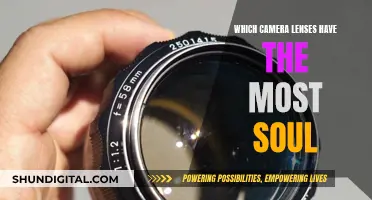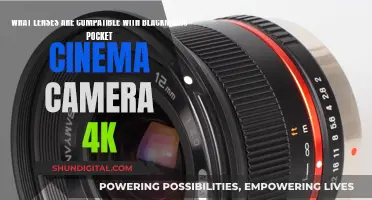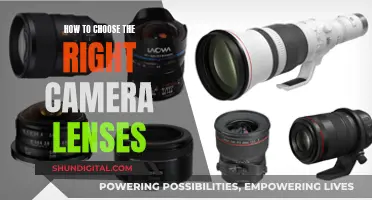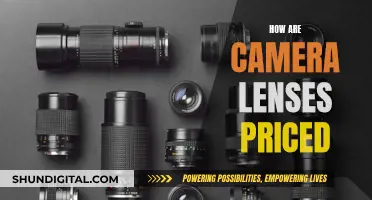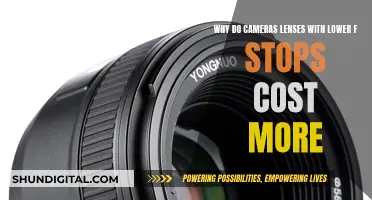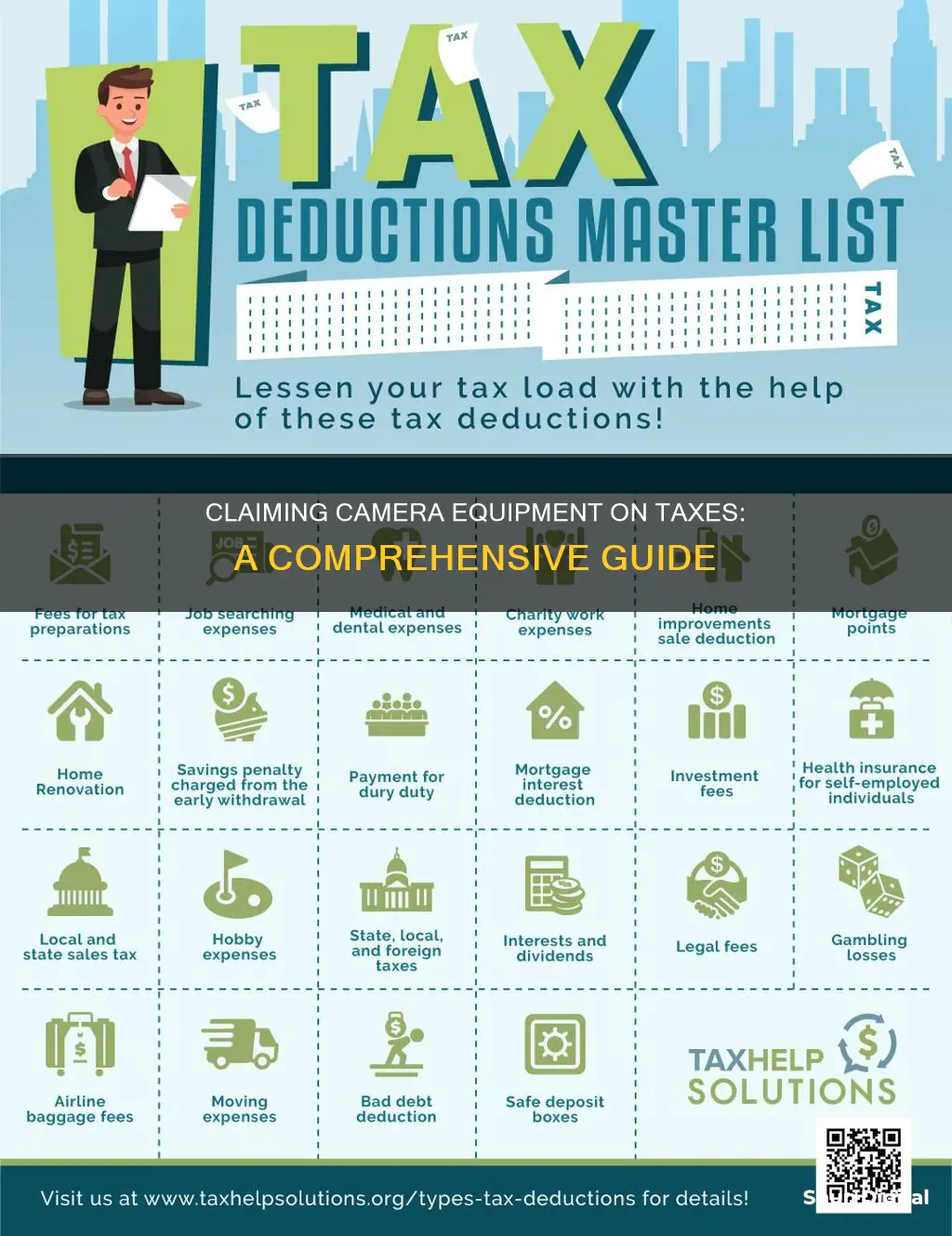
If you're a photographer, you can claim the cost of camera lenses and other equipment as a tax deduction. This includes upfront expenses on items such as cameras, lenses, lighting, light boxes, tripods, and computers. These costs can be deducted over their useful life or all at once, if they qualify, using the Section 179 deduction.
It's important to note that you must be able to prove that the expense relates to your work and that you haven't been reimbursed by your employer. Additionally, you should keep receipts, invoices, or statements to demonstrate that you incurred the expense.
If you're employed, you can claim the cost of items that are less than $300 immediately. If the cost is more than $300, the expense is depreciated over several years. If you're self-employed, you can claim a deduction in full for items that cost less than $20,000.
| Characteristics | Values |
|---|---|
| Equipment | Camera, tripods, lenses, lighting, light boxes, filters, computers, hard drives, photo editing software, camera bags, etc. |
| Expenses | Rental equipment and space, insurance, travel, training and education, tax, filing fees, licensure costs, etc. |
| Requirements | Must relate to work, not reimbursed by employer, and proven with receipts, invoices or statements |
What You'll Learn

Depreciation
There are three main ways to account for depreciated photography equipment:
- Depreciation by Item Usage: The more you use an item, the more likely it is to lose value. For example, if you estimate your lighting rigging will last for 200 jobs, you can divide its value by 200. Each time you use it, your asset depreciates by that value until it reaches zero.
- Straight-Line Depreciation: This is the most common method of depreciation and the easiest way to depreciate photography equipment. To calculate straight-line depreciation, follow these steps:
- Determine the cost of your individual asset.
- Subtract the salvage value from the initial cost. This will give you the overall asset cost used in calculations.
- Figure out its lifespan. You can research the standard expected lifespan for similar equipment.
- Divide the asset value by the years of useful life you expect to get from the asset. The amount you receive is how much your asset will depreciate each year.
Double Declining Depreciation: This is an accelerated version of depreciation, used when assets are most likely to see their usefulness during the first few years of their lifespan. It is calculated by multiplying the equipment book value by a multiple of straight-line depreciation.
When it comes to depreciating a camera lens, there are specific guidelines to follow. Firstly, you must own the lens – you can't depreciate it if you're renting or leasing it. Secondly, the lens must be used in your business, and it must be determined to have a lifespan of longer than a year. Camera lenses are likely to have a faster timespan of usage than other equipment in your studio, as they are one of the most used pieces of equipment.
Analog Camera Lenses: Interchangeable or Not?
You may want to see also

Hobby vs business
When it comes to claiming a camera lens on tax, it's important to understand the difference between engaging in a hobby and operating a business, as this distinction significantly impacts how you can claim expenses for tax purposes.
A hobby is typically undertaken for recreation or enjoyment, without the intention of making a profit. On the other hand, a business operates with the primary goal of generating revenue. While hobbies can sometimes turn into income-generating activities, determining whether it has become a business can be challenging.
The Internal Revenue Service (IRS) has established several factors to help taxpayers distinguish between a hobby and a business:
- The activity is carried out in a business-like manner, with accurate record-keeping.
- Time and effort are invested to make the activity profitable.
- The income from the activity is relied upon for livelihood.
- Losses are due to circumstances beyond the individual's control or are typical during the initial stages of this type of business.
- Changes are made to methods of operation to improve profitability.
- The individual has the knowledge or seeks advice to carry out the activity as a successful business.
- Previous success in similar activities indicates a profit motive.
- The activity generates profit in some years.
- There is an expectation of future profit from the activity or the appreciation of assets used.
If your photography activities meet most of these criteria, it is likely considered a business by the IRS. This classification is crucial because it determines how you can claim expenses, including camera lenses, on your tax return.
If your photography endeavours are classified as a hobby, you may still be able to claim some tax deductions. However, since 2018, miscellaneous itemized deductions are no longer applicable, and hobby expenses cannot reduce hobby income. Nevertheless, if you have a hobby loss expense that qualifies as a deductible personal expense, such as a home mortgage deduction, you can claim it in full. Additionally, if your hobby generates income of $400 or more in a calendar year, you must report it as self-employed income and pay self-employment tax.
On the other hand, if your photography activities are recognised as a business, you can claim a wide range of expenses, including camera lenses, as deductions. These deductions can be substantial, especially if you are investing in expensive equipment. For example, if you purchase a camera lens for $1,000 and use it 75% of the time for business purposes, you can deduct $750 from your taxable income.
To summarise, understanding whether your photography pursuits are considered a hobby or a business by the IRS is essential for correctly claiming tax deductions. Accurate record-keeping and demonstrating a profit motive are crucial for justifying your claimed expenses. By distinguishing between a hobby and a business, you can maximise your tax benefits and ensure compliance with tax regulations.
Stealth Trail Cameras: Do They Have Lenses?
You may want to see also

Home office deductions
If you work from home, you may be eligible for a home office tax deduction. This deduction is available for those who are self-employed, freelancers, independent contractors, or gig workers. To qualify, you must use a portion of your home exclusively and regularly for your business. This can include a house, apartment, condominium, mobile home, boat, or similar structure.
There are two methods for calculating the home office deduction: the simplified option and the regular/standard option. The simplified option allows for a deduction of $5 per square foot, with a maximum of 300 square feet. This method is easier but may result in a smaller deduction. The standard option requires more calculations and record-keeping but could result in a larger deduction. With this method, you must calculate your home expenses (including utilities) and then multiply that sum by the percentage of your home dedicated to office space.
If you are self-employed for only part of the year, you can still claim a partial home office tax deduction. Simply prorate your expenses based on the number of months you worked from home.
In addition to the home office deduction, you may be able to deduct other home office expenses. This includes furniture and equipment, such as a computer, printer, modem, office desk and chair, file cabinets, and lighting for video calls. These expenses can be deducted as business expenses on Schedule C.
Understanding Crop Sensor Camera Lenses Focal Lengths
You may want to see also

Travel expenses
When claiming travel expenses on your taxes, it's important to keep in mind that the travel must be directly related to your work or business. Here are some guidelines and tips for claiming travel expenses:
- If you use your car for work-related travel, such as travelling to clients, between jobs, to expos, or to collect supplies, you can claim the costs of these journeys.
- For your car, you can either claim a standard rate per kilometre or keep a logbook and claim your actual expenses. In Australia, the standard rate for the 2024 year is 85 cents per kilometre, up to a maximum of 5,000 kilometres. This will increase to 88 cents per kilometre for the 2025 year.
- If you use public transport or taxis for work-related travel, you can claim these expenses. This includes air, bus, train, and taxi/rideshare fares.
- You can also claim bridge and road tolls, as well as parking expenses for work-related trips. However, you cannot claim normal, everyday parking expenses if you drive to work and pay for parking near your workplace.
- If your work-related travel includes an overnight stay, you can claim accommodation, meal, and incidental costs.
- When claiming meals, make sure they are reasonable. You cannot claim any private or entertainment expenses.
- If your work-related travel is split between work and leisure, you must split your expenses accordingly. The primary purpose of your trip must be work-related, and you can only claim the portion that is work-related.
- Keep a travel diary or similar record of your work-related travel, especially if you are away from home for more than six consecutive nights. This should include details such as dates, locations, activities, and expenses incurred.
- Retain all receipts, invoices, and other relevant documentation to support your claims.
- If you receive a travel allowance from your employer, it is typically considered taxable income and should be included in your tax return. You can claim a deduction for the amount you spent on deductible travel expenses, but only if you have incurred any deductible expenses.
Canon Cameras: Do They Include Lens Caps?
You may want to see also

Education expenses
If you are a photographer, you can claim tax deductions for education expenses. This includes the costs of training sessions, education, certifications, and other related expenses. For example, if you attend a workshop on a certain photography skill, you can deduct the cost of attendance, travel expenses (e.g. fuel, car mileage, car insurance), and any costs of lodging.
These tax deductions are available in addition to education tax credits, which are granted to those enrolled in post-secondary education.
You can also deduct the costs of subscriptions and licenses for photo editing software such as Photoshop, Lightroom, and other software.
Why Are Camera Lenses So Affordable?
You may want to see also
Frequently asked questions
If you're doing photography as a hobby, the IRS will generally frown upon you taking deductions for equipment. However, if you're earning income from photography, even if it's just a side gig, you may be able to claim a portion of your expenses. It's best to consult a tax professional for specific advice.
If you're a professional photographer, you can likely claim your camera equipment as a business expense. However, if you're just starting out, you'll need to prove that you've generated enough revenue to justify the expense. In other words, you can't claim a $1,500 camera as a business expense if you only earned $1,000 last year.
It's important to keep detailed records of your expenses when it comes to tax deductions. However, if you're claiming a portion of your expenses over several years, you may not need the original receipt. Consult a tax professional for advice specific to your situation.
Yes, there are several other deductions you may be able to claim, including studio or office space, courses and workshops, travel expenses, insurance, and more.


